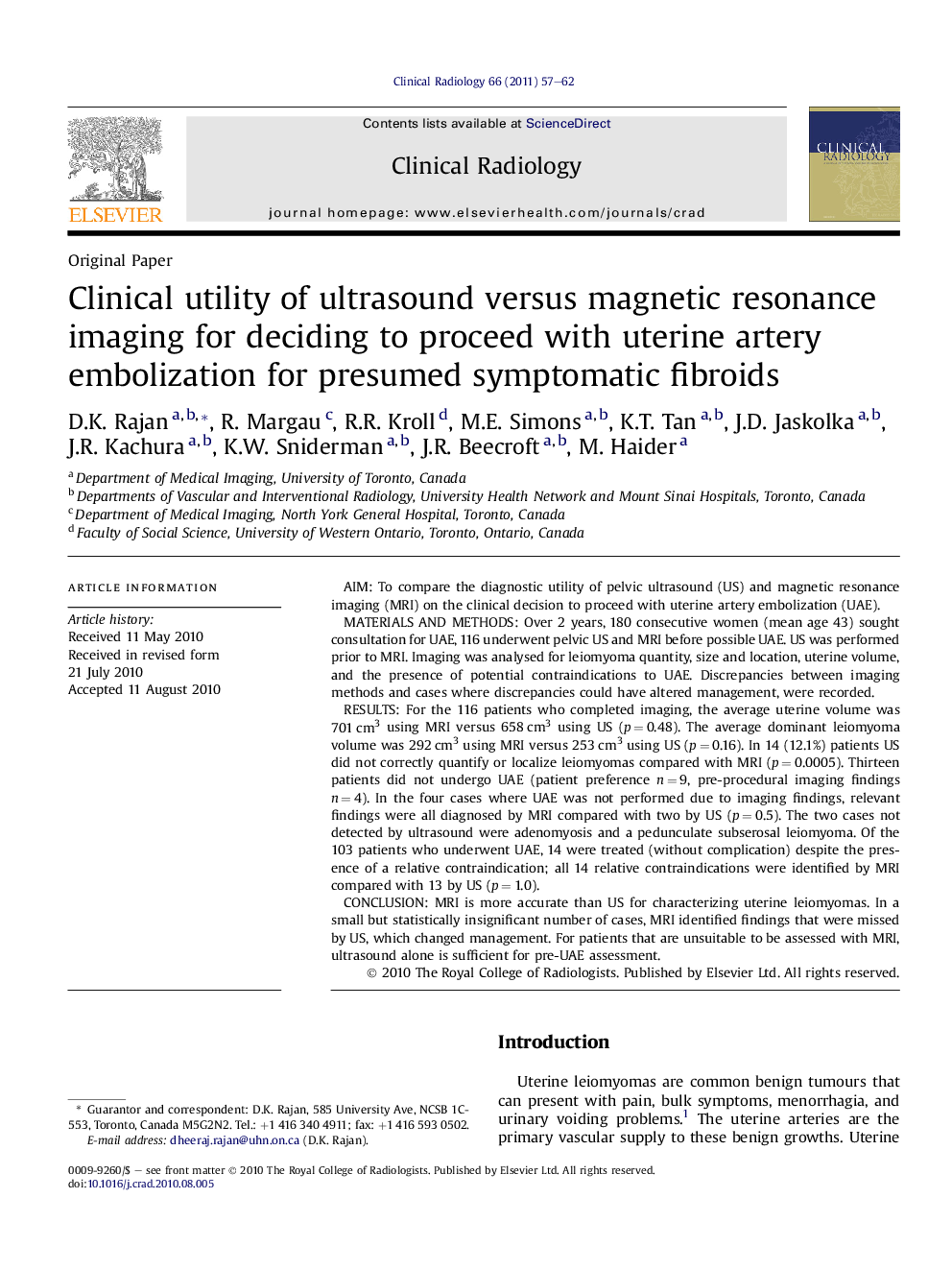| کد مقاله | کد نشریه | سال انتشار | مقاله انگلیسی | نسخه تمام متن |
|---|---|---|---|---|
| 3983296 | 1257759 | 2011 | 6 صفحه PDF | دانلود رایگان |

AimTo compare the diagnostic utility of pelvic ultrasound (US) and magnetic resonance imaging (MRI) on the clinical decision to proceed with uterine artery embolization (UAE).Materials and methodsOver 2 years, 180 consecutive women (mean age 43) sought consultation for UAE, 116 underwent pelvic US and MRI before possible UAE. US was performed prior to MRI. Imaging was analysed for leiomyoma quantity, size and location, uterine volume, and the presence of potential contraindications to UAE. Discrepancies between imaging methods and cases where discrepancies could have altered management, were recorded.ResultsFor the 116 patients who completed imaging, the average uterine volume was 701 cm3 using MRI versus 658 cm3 using US (p = 0.48). The average dominant leiomyoma volume was 292 cm3 using MRI versus 253 cm3 using US (p = 0.16). In 14 (12.1%) patients US did not correctly quantify or localize leiomyomas compared with MRI (p = 0.0005). Thirteen patients did not undergo UAE (patient preference n = 9, pre-procedural imaging findings n = 4). In the four cases where UAE was not performed due to imaging findings, relevant findings were all diagnosed by MRI compared with two by US (p = 0.5). The two cases not detected by ultrasound were adenomyosis and a pedunculate subserosal leiomyoma. Of the 103 patients who underwent UAE, 14 were treated (without complication) despite the presence of a relative contraindication; all 14 relative contraindications were identified by MRI compared with 13 by US (p = 1.0).ConclusionMRI is more accurate than US for characterizing uterine leiomyomas. In a small but statistically insignificant number of cases, MRI identified findings that were missed by US, which changed management. For patients that are unsuitable to be assessed with MRI, ultrasound alone is sufficient for pre-UAE assessment.
Journal: Clinical Radiology - Volume 66, Issue 1, January 2011, Pages 57–62